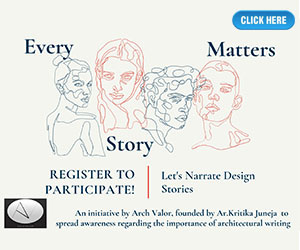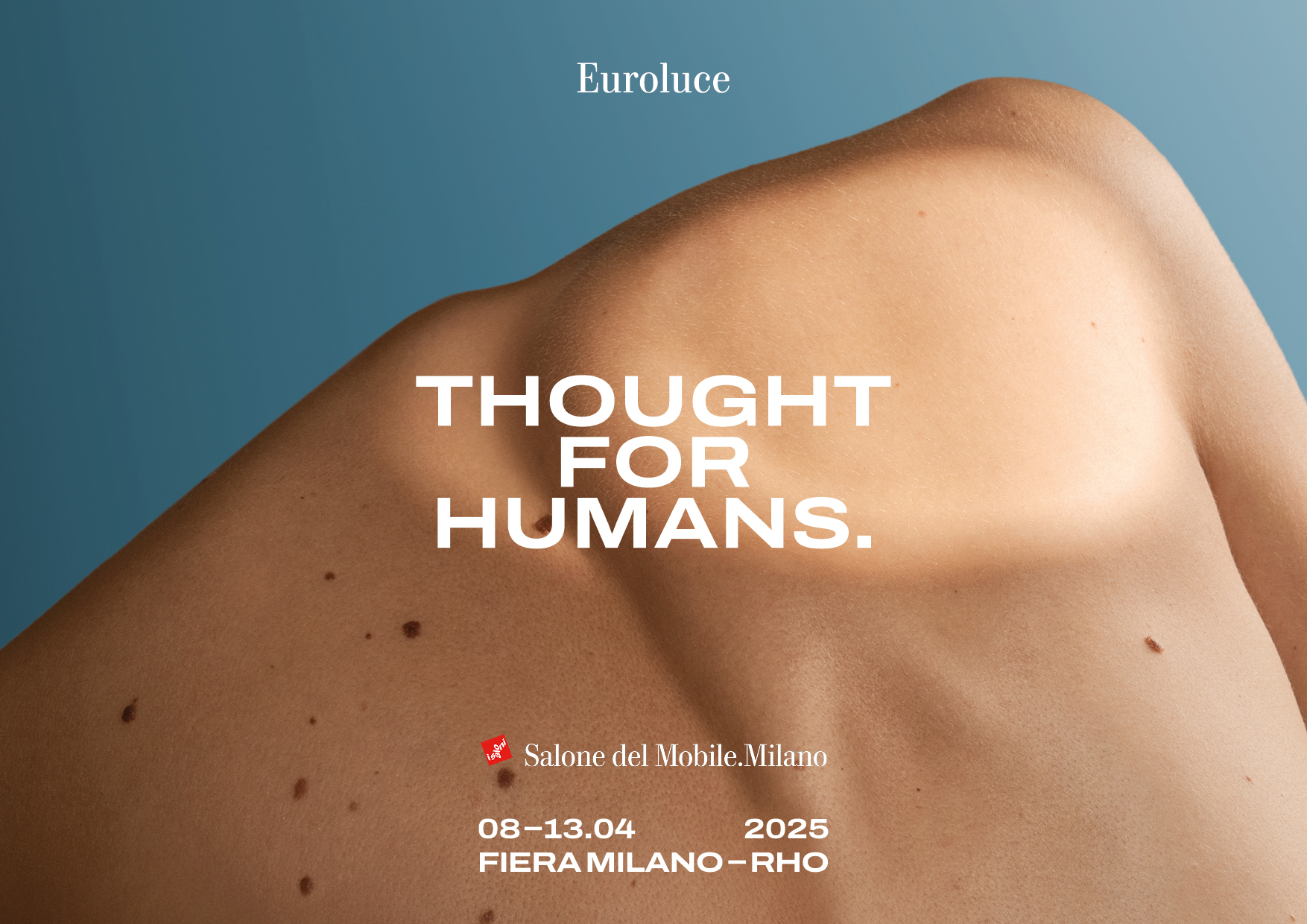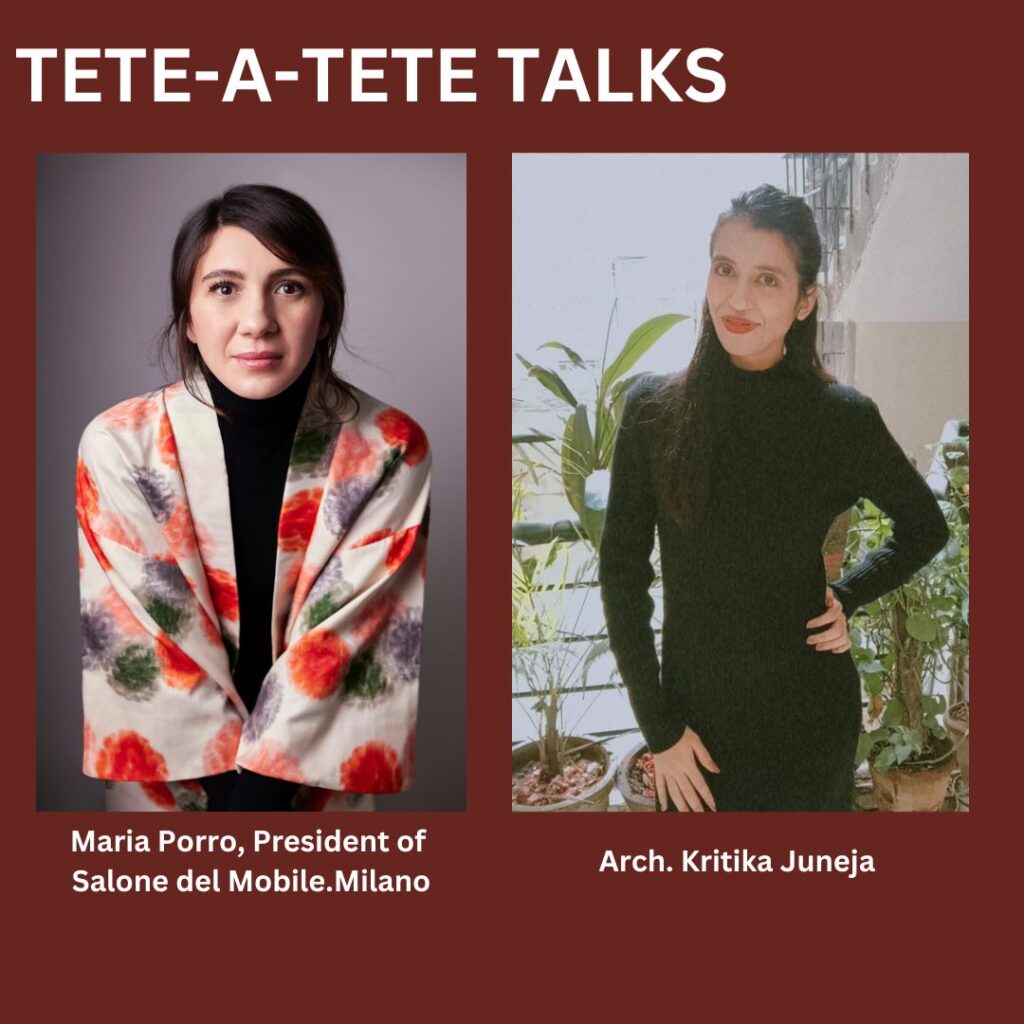
Ciao Everyone! We are pleased to welcome Maria Porro for our next episode of Tete-a-Tete series powered by ArchValor and hosted by none other than Ar. Kritika Juneja. Photographer of Maria’s portraits:-Guido Stazzoni
So, to begin with, could you tell us about your early brush with Salone Milano, as you mentioned in one of your interviews that you have been attending Salone since your childhood days, could you tell us about some early encounter that inspired your passion for design?
My company is one of the 15 companies that have been a part of Salone since it began. My memories as a child with my grandfather go just beyond interacting with people at Salone. In my memory, I mostly remember the spaces I saw while I was a child. As I walked up the escalator at the first fairground, I saw all the different spaces of different companies, each one expressing a different perspective. Some were eclectic, some were crazy and minimalist spaces. Some were luxurious. Others were conservative. It is this diversity that I still remember.
I became curious about and then found products that somehow were not just products, but ideas that were very important to me and as a teenager at the time. My father used to bring me to satellite so we could see the young talents and we also produced pieces designed by young designers from satellite. Having that conversation with them and learning about international design schools was much important to me.
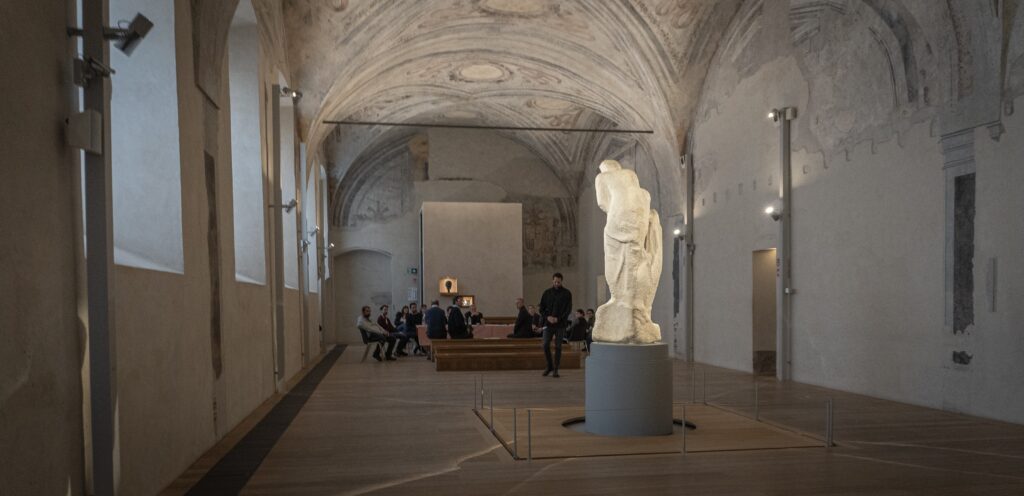
How will the Salone model evolve in 2025, and what changes will we be looking at?
Salone evolves because the companies participating evolve, and that is the first thing. In addition to the Salone’s evolution as an organizer, it has been creating new ways for the fair to be organized, a new way to exhibit companies, and a new space for discussions, panels, round tables about Salone culture in the public sphere. Since 1997, we have invested in the city by creating special events inside Milano and boosting what the city is doing.
This year, we will see a special installation by Robert Wilson on Pietà Rondanini in Sforza Castle. Paolo Sorrentino, an amazing Oscar-winning director, will create a space about on the timeless waiting area. In addition, will be discussing heritage and designing a heritage space among the companies, emphasizing how valuable what companies are producing is and opening up new frontiers for them. There will be amazing speakers, designers, and directors talking and building up incredible things.
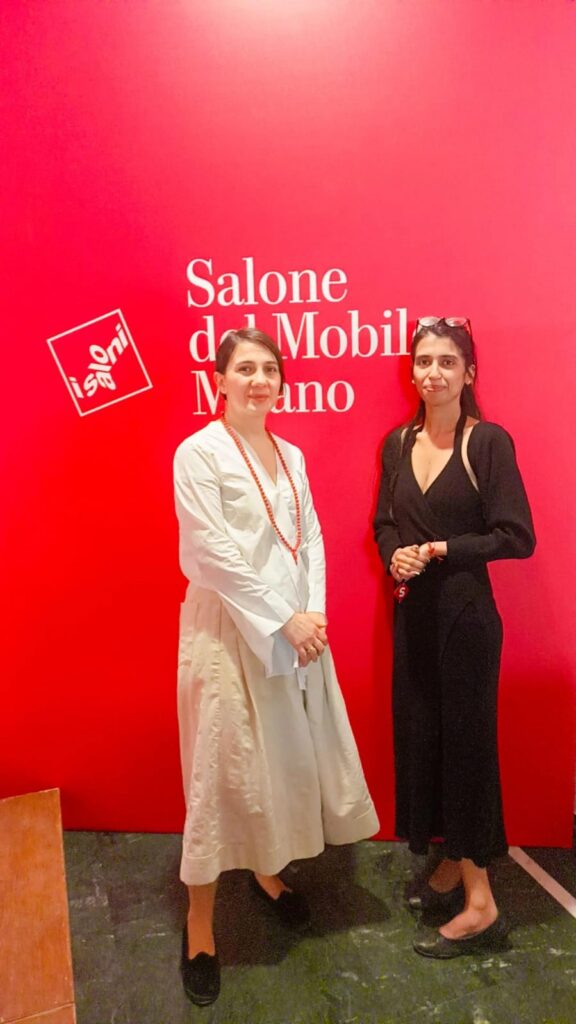
Since we are talking so much about design, what is your idea of good design?
Based on my approach, my family background, and also the fact that I studied and graduated in set design, I have worked in the theater field for many years. Therefore, for me, it’s a combination of all this culture and good design. It’s a 360-degree approach. The final product is the focus. Objects of design are about how they are built. They are about the people behind them. They are about how the people can live their lives with them. Is it more valuable while the time passes? How long is gonna last? For me, the best judge of design is time.
As Salone has forged new strategic alliances with the United States, China, and most lately with Saudi Arabia. Can we expect any plans for India maybe next year?
As we are here for the second time this year, it’s because, of course, there is an interesting design community here. Interior designers and architects are delivering and producing amazing projects to India with a very original local perspective, and Salone finds this extremely interesting. It’s also very interesting for the companies exhibiting at Salone to have the opportunity to interact with these people. Our furniture industry here in India is constantly evolving, so we are looking forward to having more exhibitors from this country, to have a real exchange, not just monodirectional, one-way communication. Furthermore, we are in touch with the embassy, the Italian Institute for culture, as well as the local press magazines, in order to understand how Salone can help and support the local community.
Your recent communication campaign ‘Thoughts for Humans’ fascinates me. Could you elaborate on it?
It is the first time that Salone does a campaign using the medium of photography. This has always been a graphic campaign since 62 years ago. We decided to use photography but put the focus on the human being in relation to objects and or light, since it is ultimately a human centric campaign. At the end, there is rage that has to deal with our skin. We sit on chairs. We lay on beds. The bed is where your children are conceived.
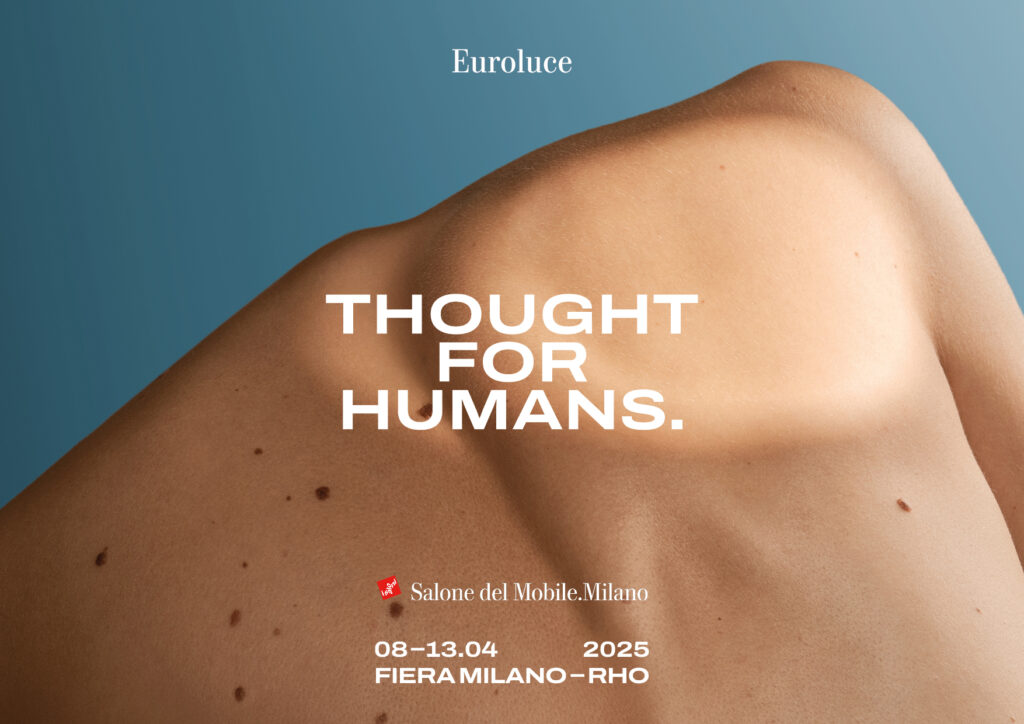
How could you define luxury? In your opinion, can luxury and sustainability coexist?
There is no question that real luxury is mandatory, it is sustainable, and it’s a great challenge right now, because most of the time, it’s misunderstood. Luxury comes from well-paid workers and responsibly sourced materials. Must be built to last for generations. Must respect the environment. The biggest challenge nowadays is the product to arrive in the market with the right price, and make sure the people understand what they’re paying for. I believe Salone and the press have a role to play today in making the public aware of what’s behind and what lies ahead. In fact, we don’t hesitate to spend 1000 euro on an iPhone or any technological device, and because technology has a very short life and we spend a lot on it. In one year, it expires, and very quickly, it becomes obsolete.So it’s a challenge to respect all the sustainable chain and arrive at the right price. There is also the challenge of explaining why that price is so high, and I think this is the real challenge with the food we see today, more and more understanding that maybe it is better to eat less, but to search for the right ingredients, etc. The approach for furniture and design should be quality over quantity definitely.
If something is timeless, then it must be a good design.
-Maria Porro, Present Salone del Mobile.Milano
I won’t ask how you balance your roles as the President of Salone and Marketing head of Porro, since I know women definitely can do anything. However, since you have been the first woman to take on the role as the president of Salone in 2020, which significant changes have you bought since your involvement?
My goal was not to bring change to Salone, but to allow the incredible team to understand that there is a way to do things differently. COVID was a shock, because Salone did not happen in 2020, and in 2021, I was to present the super ceremony, a new format, proving to the world that design can come back with a new approach again, bringing together all the design community in Milan with a new approach.
So we prove that there’s a design thinking that can be, can be applied to the construction building project of a fair. We try together, not this, not me, but it’s a big organization with many different people involved, to let Salone evolve, just as Salone has been doing since it was born, since it was originally a product fair for Italian companies and clients. So the way it reshaped itself, constantly facing challenges, crises, and the like, was incredible, and we’re doing the same now, together with companies, the press, and all our international partners.
What is the one best and one worst piece of advice you ever got in your life?
When I was a teenager, my father told me, “Don’t study architecture. I’m already an architect. Don’t work with me.”. It was probably both the worst and the best advice given to me by one person because it gave me the freedom to choose, let me find my own way. I studied set design. I worked in theater big events for a decade, but at the end, I went back to business entirely. However, at the end, I thought I was for the first question you asked. No, I was so attached to this world, so I came back, yes, I did that.
